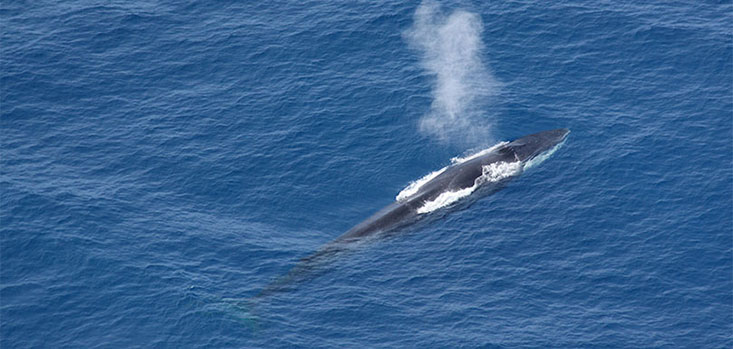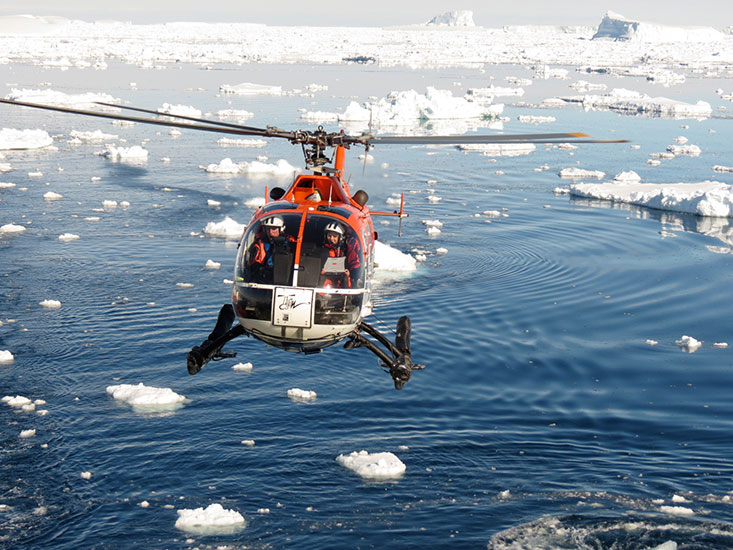Comparative studies of baleen whale and krill distribution patterns in Antarctica

Expedition with the research vessel "Polarstern" along the west side of the Antarctic Peninsula in March/April 2018
The aim of this project is to compare the distribution patterns of different baleen whale species with the distribution of krill in Antarctica. Krill is the main food of all baleen whales that come to Antarctica every austral summer to feed. Information on ecological relationships between whales and krill provides an important basis for whale conservation and management. Over two million whales were killed in the Southern Ocean during the commercial whaling of the 20th century. Most populations have not recovered from the decimation to this day. Little is known about the population status and ecology of whales in Antarctica. The West Antarctic Peninsula is also the area of Antarctica currently experiencing the greatest climate-related changes, which can have a major impact on food webs, biodiversity and species composition. Knowledge of ecological relationships and interrelationships, as well as monitoring their evolution, is crucial for assessing climate-induced changes in the Antarctic ecosystem.

Photo: ITAW
The data for a comparison of cetacean and krill distribution patterns will be collected during a seven-week expedition of the research vessel "Polarstern" on the west side of the Antarctic Peninsula in March/April 2018. In parallel to a krill survey (to determine the distribution and biomass of different krill species) conducted by the Alfred Wegener Institute, scientists from CeNak and the University of Veterinary Medicine Hannover (led by Dr Helena Herr, CeNak) will conduct airborne whale surveys from the ship using the ship's own helicopters. Pre-determined transect lines, which representatively cover the entire krill study area, are flown to record whale sightings with positional accuracy. With the help of these data, the distribution and density of whales in the krill study area can be determined. At the end of the expedition, simultaneously collected distribution data on whales and krill will be available, which can be compared with each other using statistical methods. The results of this comparison are expected to provide new insights into the predator-prey relationship. They will also provide important information for the protection of Antarctic whales and for the management of krill fisheries, which are practised in particular along the West Antarctic Peninsula.

